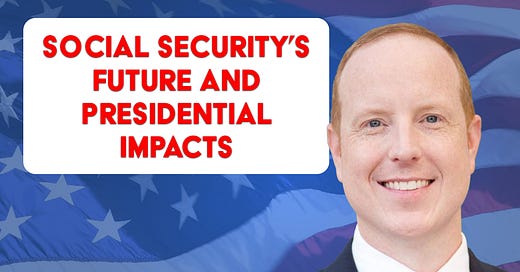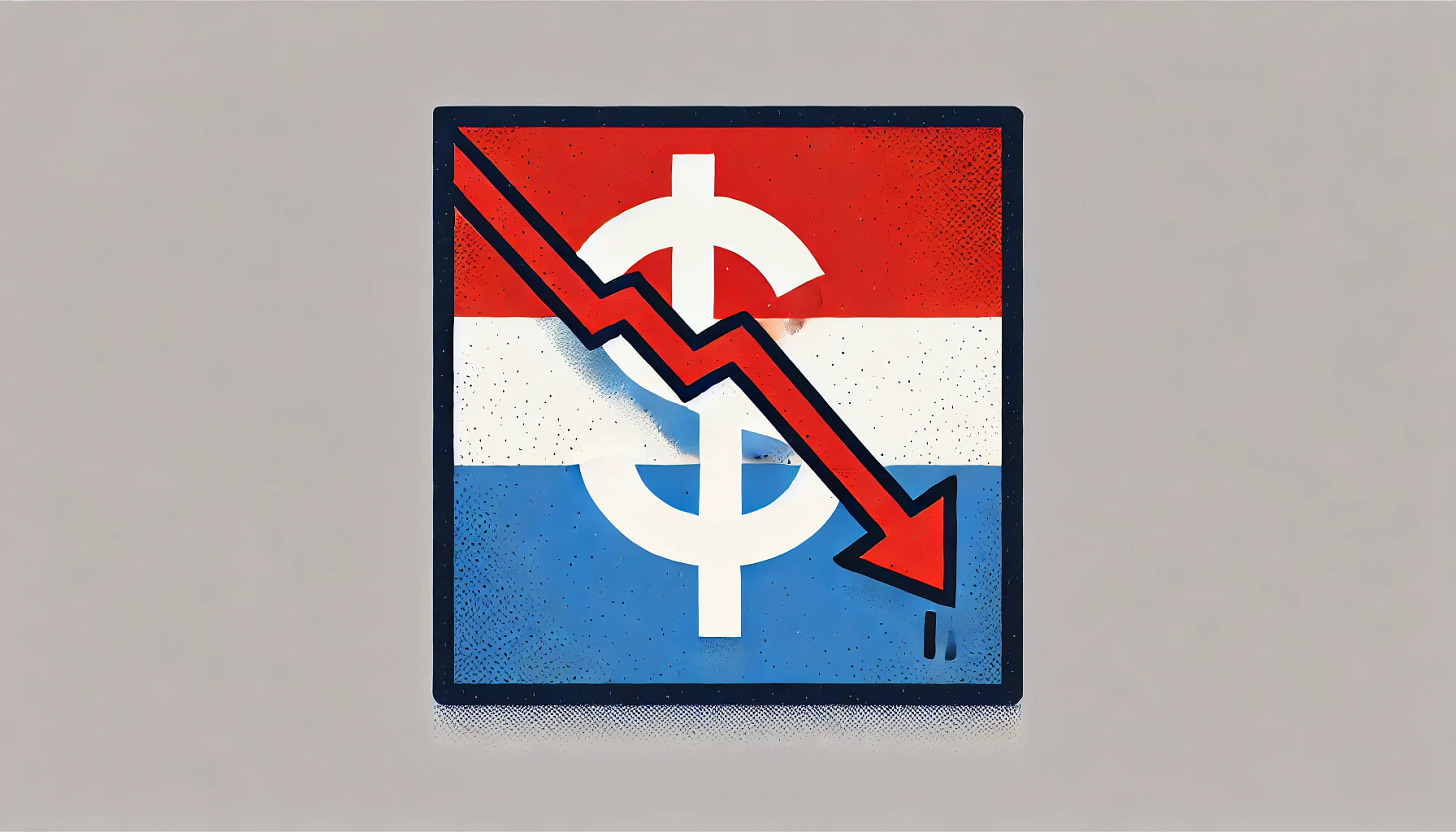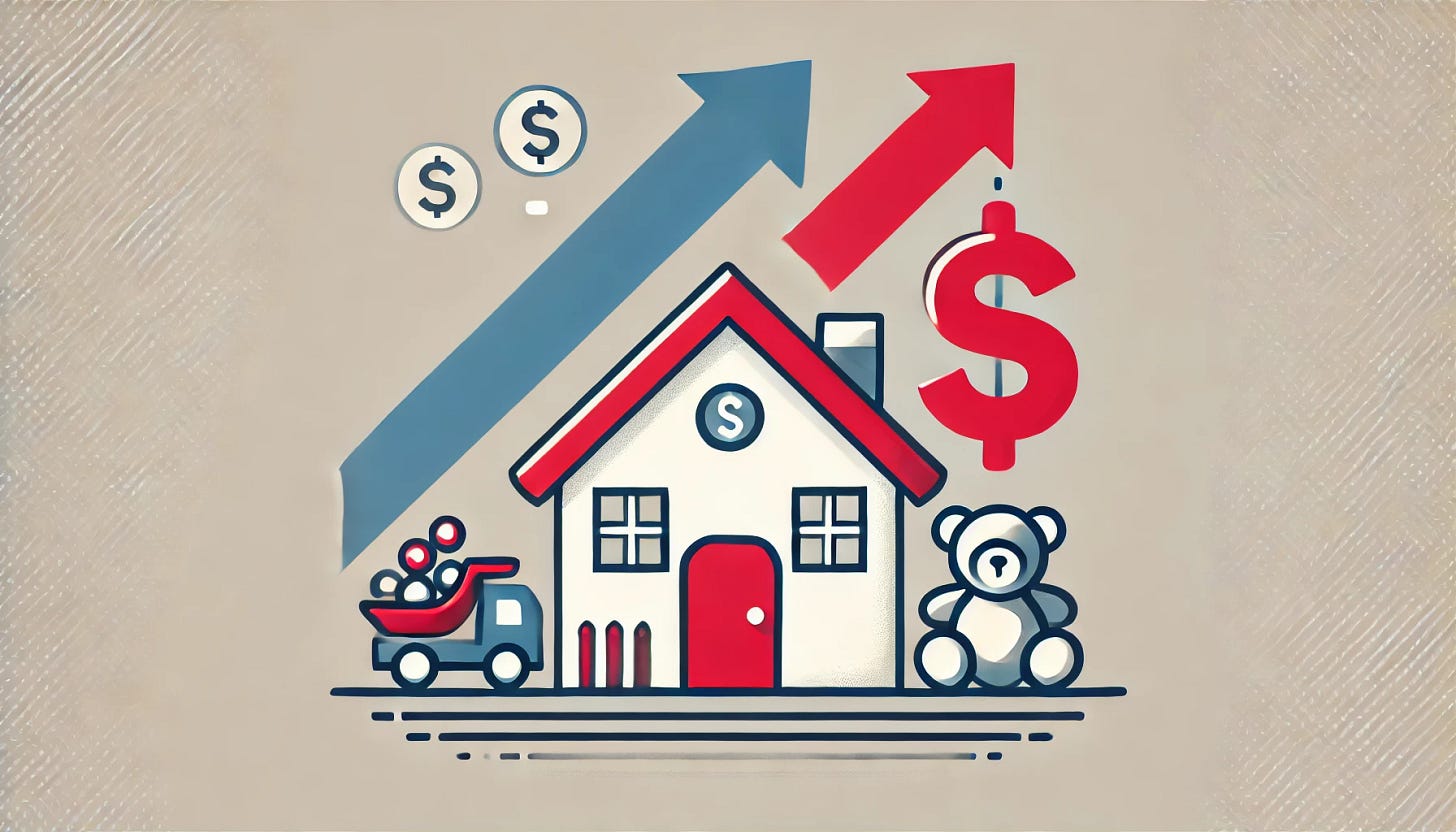306. Social Security’s Future and Presidential Impacts | This Week's Economy Ep. 84
How 2024 candidates’ policies could shape Social Security, economic stability, and more.
Hello Friends!
This week’s episode dives into key election-related issues that could significantly impact Social Security and the broader economy.
With projections indicating that the Social Security Trust Fund could be depleted in six years under another Trump presidency, while a Harris presidency may maintain the status quo, voters must consider the fiscal implications of their candidates' policies. Topics covered include the impact of tax exemptions, tariff policies, and entitlement expansion, all of which threaten the solvency of the nation’s mandatory programs.
Watch the episode on YouTube below, listen to it on Apple Podcast or Spotify, and visit my website for more information.
PRESIDENTIAL CANDIDATE'S IMPACT ON SOCIAL SECURITY
In the News:
A report from The Committee for a Responsible Federal Budget warns that under another Trump presidency, the Social Security Trust Fund could be depleted within six years. A Harris presidency is projected to maintain the current trajectory. The report cites tax exemptions and tariffs as key policies influencing the trust fund's shortfall. Sources: CBS News and Washington Post
My Take:
Trump on Entitlements: While Trump has said little about entitlement reform, his proposal to exempt Social Security income from federal taxes will greatly impact the trust fund. About 40% of beneficiaries pay taxes on some of their Social Security benefits, which helps replenish the trust. The CRFB estimates that eliminating this tax could cost the program nearly $1 trillion over the next decade. His tax exemption proposals could offer relief to 93.2 million Americans but have substantial costs along with his other tax exemption proposals and tariff policies.
Harris’s Entitlement Stance: Harris has proposed granting amnesty to undocumented immigrants, which could extend entitlements like Medicare to an additional 11 to 12.5 million people. This could add nearly $2 trillion in costs without considering the added burden on Social Security.
Mandatory Program Insolvency: The nation faces a looming fiscal crisis driven by unsustainable federal spending, with the national debt exceeding $35 trillion. Due to demographic shifts and rising healthcare costs, the impending insolvency of mandatory programs like Medicare and Social Security demands immediate action from federal lawmakers to address the root causes of these issues.
Related:
FED RATE CUTS MISTAKE
In the News:
After the recent Federal Reserve’s interest rate cut, the economy continues to run hot, raising questions about the necessity of the cut. Stocks are hitting new records, and the 10-year U.S. Treasury yield has risen to 4.10%. Contrary to some expectations that the cut would lower mortgage rates, the average 30-year mortgage rate has increased to 6.4%. Sources: Inc. and NPR.
My Take:
Repeating Past Rate Cut Mistakes: The Federal Reserve’s decision to cut the federal funds rate by 50 basis points, despite inflation remaining above target, mirrors the missteps of the late 1970s. Premature rate cuts risk fueling inflation.
Mortgage Rates: While the Fed influences mortgage rates, they primarily track the yield on 10-year Treasury bonds, which has risen due to investor expectations of future rate cuts. Other factors like lender costs and borrower profiles also shape mortgage rates, though they remain lower than last year, enabling many to refinance.
Solution: The Federal Reserve should hold off on further rate cuts. Instead, it should focus on aggressively reducing its balance sheet and urge the government to curb spending to help absorb the excess liquidity driving inflationary pressures.
Related:
SHIFT TO BUYING CONDOS AND TOWNHOMES
In the News:
With rising housing costs, more Americans are considering alternatives like condominiums and townhomes. The Washington Post questions whether the American dream should shift to these more affordable options, while a Zillow report shows that builders are responding by constructing more attached, single-family homes. Although home construction has declined for the second straight year, it remains above pre-pandemic levels. Sources: Washington Post and Zillow
My Take:
Housing Market: While the growth in multi-family housing options is encouraging, overall housing costs remain too high. Local regulations, restrictive zoning laws, and burdensome permitting processes continue to hinder construction and drive up prices, making homeownership less affordable.
Inflation Drives Construction Costs: Inflation, largely driven by federal deficit spending, also increases the cost of building materials and labor. To combat this, fiscal reforms are needed to reduce government spending, bring inflation under control, and restore purchasing power for families.
Increase Housing Supply: Expanding multifamily housing is just one piece of the puzzle. To address the affordability crisis, we must reduce regulatory barriers and streamline permitting processes to encourage more housing development. Increasing the supply is the only sustainable way to lower prices and make homeownership accessible to more Americans.
Related:
TAX INCREASE FOR CHILDCARE
In the News:
Travis County, Texas, is voting on a property tax increase to subsidize child care for low-income families. If passed, the average homeowner could see an additional $126 in annual taxes, with subsidies for families earning 85% or less of the median family income. Source: Axios
My Take:
Tax Subsidized Child Care: Allowing citizens to vote on a local tax increase for a community benefit is a more appropriate approach than implementing such measures at the state level. However, despite good intentions, this tax hike may inadvertently increase childcare costs rather than alleviate them.
Property Taxes: Property taxes act like an unjust wealth tax, forcing homeowners to continuously "rent" from the government. Raising them burdens low-income families more, making homeownership even less attainable.
Solution: Texas should focus on cutting spending and lowering taxes to support low-income families better. At the state level, lawmakers should aim to eliminate property taxes, implement sustainable budgets, and use surplus revenue to reduce and eventually eliminate school district taxes.
Related:
BIDEN-HARRIS STUDENT LOAN FORGIVENESS
In the News:
Biden announces that more than 1 million public service workers have had their student loan debt forgiven under his administration. An additional $4.5 billion has been forgiven, according to the president. More than $73 billion in student loans have been forgiven under a 2007 initiative, according to the Education Department. Source: CBS News
My Take:
Redistribution Scheme: Amid rising prices for essentials like food, shelter, and gas, the Biden administration’s student debt relief plan functions as a redistribution scheme that risks further fueling inflation. It shifts the burden from those who didn’t attend college or don’t have student loans to those who do.
In This Economy?: Celebrating the spending of billions of dollars during an inflationary period is misguided. Inflation is largely driven by congressional overspending, which increases the national debt, prompting the Federal Reserve to print more money. Too much money chases too few goods, exacerbating the current economic situation.
Debt Forgiveness Trap: Student loan forgiveness may seem noble but could harm economic stability and fairness. Forgiving loans exacerbates existing issues, disproportionately affecting lower-income Americans and creating unintended financial consequences for the people it aims to help—a common outcome of well-meaning government programs.
Related:
SEPTEMBER JOBS REPORT: RED V. BLUE STATES
In the News:
The latest September 2024 Jobs Report from the Bureau of Labor Statistics highlights stark differences in state-level employment. Texas led the nation with 327,400 new jobs, outpacing California's 265,300. States like South Dakota had the lowest unemployment at 2.0%. In comparison, Nevada and the District of Columbia faced the highest rates at 5.6% and 5.7%, respectively, signaling a significant divide between red and blue states in job creation and economic performance. Source: Bureau of Labor Statistics
My Take:
Economic Growth in Red States: States like Texas and Florida benefit from pro-growth policies, reflected in strong job creation. For instance, Texas’ 2.3% job growth outpaces California’s 1.5%, with lower taxes and fewer regulations playing a pivotal role in attracting businesses and boosting employment.
Energy Policy's Economic Impact: Texas’ focus on energy production—particularly in natural gas—fuels its economic resilience, while California’s regulatory approach to energy, such as quantity controls for gasoline, is likely slowing job growth. The 5.3% unemployment rate in California, compared to Texas' 4.1% rate, reflects how policies directly affect state economies.
Election Implications: With the election nearing, these economic disparities offer voters a clear choice. Red states’ low-tax, free-market policies provide a blueprint for economic recovery, while blue states' heavy regulation and spending risk further job losses and economic stagnation. These data will be crucial for framing the national economic debate.
Related:
CFPB’s FINANCIAL DATA RULE CONCERNS
In the News:
The CFPB’s proposed Section 1033 rule aims to give consumers more control over their financial data, making it easier for them to switch banks or use fintech services. By standardizing data-sharing practices, the rule intends to create a more competitive marketplace where consumers can “walk away” from poor service or high fees. However, data privacy and security concerns arise, particularly for third-party fintech companies that don’t operate under the same regulatory standards as banks. Source: Reuters
Dr. Ginn’s Take:
Letting Markets Work: The rule offers the potential for greater consumer choice by allowing easier access to better services. However, the free market, not government intervention, should drive competition and innovation in the financial sector.
Avoid Overregulation: Excessive government oversight could stifle fintech innovation and limit the variety of consumer services. Allowing competition to flourish organically will provide better options and lower costs.
Consumer Choice and Protection: A competitive marketplace can protect consumers through innovation and efficiency without heavy-handed government involvement. The focus should be empowering consumers to make informed choices rather than adding unnecessary regulations limiting their options.
Related:
Thanks for joining me in this episode of "This Week's Economy." For more insights, visit vanceginn.com and get a paid subscription to my Substack newsletter at vanceginn.substack.com today so you receive these insights in your inbox. God bless you, and let people prosper.
Keep reading with a 7-day free trial
Subscribe to Let People Prosper to keep reading this post and get 7 days of free access to the full post archives.










